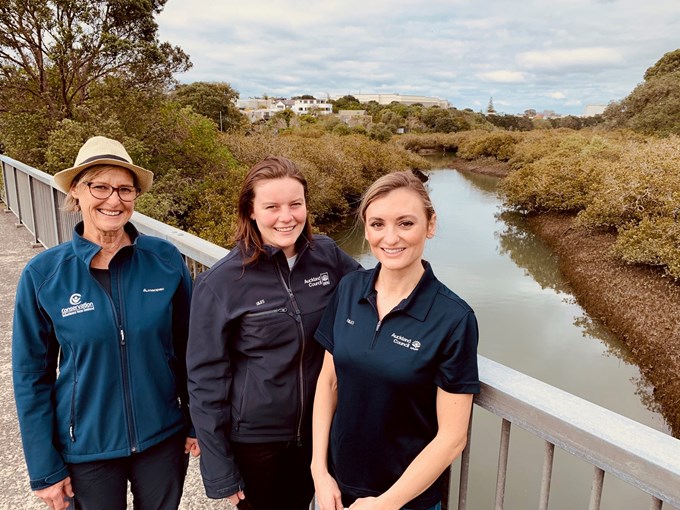Last month, Devonport-Takapuna Local Board committed funding to support a cleaner and healthier Wairau Estuary and beach in Milford.
Funding has been committed to employ a contractor to co-ordinate with community members and volunteer groups to coordinate restoration efforts that include a clean-up (rubbish, weeds and pest plant removal), and replanting of native species into the estuary.
“The restoration work will deliver on community desires for a healthier habitat for various native fish, invertebrate and bird species, as well as working toward improved water quality for local beach users,” says Local Board Chair, Aidan Bennett.
“With the support of our passionate community in Milford and Castor Bay, combined with the collective efforts of the council, up-stream neighbours, including our neighbouring Kaipatiki Local Board - we are only too pleased to be able to play a constructive role in improving the health of this significant waterway.”
Estuary restoration works will get underway this financial year and deliver phase one of three outlined in the Wairau Estuary Enhancement Investigation Report – a report commissioned and supplied to the local board by Stephanie Robinson of council’s Healthy Waters team.
Get involved
If you’d like to get involved in restoring the Wairau Estuary, contact Clair Hobi at chobi@cvnz.org.nz
Wairau Valley Catchment
The estuary in Milford is connected to the inland Wairau Valley Catchment, which stretches several kilometres into the industrialised and commercial heart of the Wairau Valley. Much of the watercourse flowing from there into the estuary, marina, and beach travels through concrete pipes or concrete-lined channels - making it one of the most modified and polluted waterways on the North Shore.
Common contaminants entering the watercourse, via the stormwater system, include heavy metals like zinc and copper, along with bacteria, litter and sediment. The origins of these contaminants include run-off from industrial land, high traffic roads, and recreational activities in the estuary.
Despite the less than ideal conditions, investigations have revealed the waterway leading to the estuary is home to at least nine native freshwater fish and crustacean species.
Other supporting work programmes
Water quality testing, as part of the council’s Safeswim Programme at Milford beach, has also detected other types of contamination entering the waterway, that at times pose health risks for beach users. As a result, the council has deployed additional resources via its Healthy Waters team (working in partnership with Watercare), to identify and resolve stormwater cross-connection issues.
These investigations, which started in late 2018, are being carried out systematically and methodically working their way up the stormwater network. They involve testing at all outlets using techniques such as CCTV, smoke testing and dye testing.
They are also evaluating the condition of public stormwater and wastewater assets and investigate commercial and residential pipes to check to see if wastewater is being mixed with stormwater. If they are, they then work with relevant property owners to rectify the situation.
To date, 50 properties upstream of the estuary have now been investigated, with 315m of wastewater and 346m of stormwater networks CCTV’ed. This has led to one cross-connection being identified and resolved. A networks screening investigation is currently being scoped to track sources of contamination further up-stream. This stage is expected to begin in late 2020.
Since 2018, Kaipatiki Local Board has also funded an Industrial Pollution Prevention Programme to educate businesses in the Wairau Valley how to reduce their impact on the Wairau Creek which discharges into the estuary and impacts Milford beach water quality. Learn more here.
What can you do to help?
If you observe an unusual discharge into this waterway, please call the Pollution Response Team on 09 377 3107, or if you suspect an overflow (wastewater) issue, contact Watercare on 09 442 2222.


